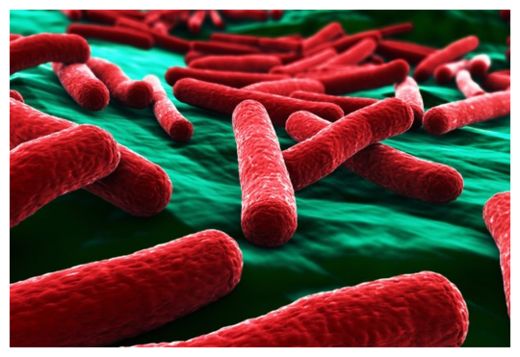
© fusebulb/Shutterstock
is one of millions of bacterial species that live in our gut. From when we are infants,
E. coli dwells peacefully in the lower intestine, maintaining a give-and-take relationship with our body - it helps the gut digest food, and gets energy to live and reproduce in return.
However, the normally harmless bacterium can quickly evolve into a deadly form that can cause severe food poisoning, infection, and sometimes death. This can happen especially when it leaves the gut and enters our blood stream.
Scientists have long tried to figure out how this mild bacterium morphs into a killer. A new study published in
PLOS Pathogens throws some light on this process of transformation.
The researchers in the study found that a key factor that triggers this transformation is contact with the body's immune cells called macrophages. Macrophages help kill dangerous bacteria or viruses by eating and digesting them.
The researchers grew two groups of
E. coli in lab dishes, one with and one without macrophages.
E. coli can grow and reproduce very quickly, producing generations within weeks. The researchers observed how
E. coli shape, size and structure changed in successive generations.
After 60 generations, which took only 4 days, they began to notice subtle changes in the appearance of the bacterial cells. Some became smaller in size; some developed a slimier surface. The bacteria that were smaller did not die when exposed to antibiotics and the slimy ones were able to escape from the macrophages' clutches more easily.
Changes were also observed in their genes. The researchers found that certain DNA segments jumped between genes, switching on some - such as one that produces toxic substances similar to the typhoid bacterium - and turning off others.
What the bacteria were doing, the researchers realized, was adapting. They were changing their appearance to protect themselves from being eaten by the macrophages, mutating into resistant forms. They were becoming more and more like pathogens - disease causing entities.
To test this further, they injected these modified strains into mice and found that they were more likely to cause infections than the ones grown without macrophages. In less than 30 days and 500 generations, the modified bacteria were able to cause diseases in mice, the researchers found.
"It was remarkable to observe how rapidly pathogenic traits can evolve," stated
Isabel Gordo senior author and evolutionary biologist at the Instituto Gulbenkian de Ciência in Portugal.
E. coli bacteria are ideal creatures to carry out such rapid evolution studies because of their quick growth rate, allowing scientists to study changes in real-time within weeks. Further research would help uncover how other similar bacteria also develop disease-causing abilities, the researchers believe.

Just consider, when societies are placed under more stress, for whatever reason, it seems that the first to adapt are the psychopaths, the predators on the rest of humanity.
Like the bacteria, some psychopaths 'become smaller' by lowering their public profiles, even going underground, while others 'become slimier' by adapting their schemes to be even more cynically manipulative and evil.
It's almost enough to make one look forward with cold anticipation to the dark internet trials and crowdfunded assassinations of the psychopaths.